Examining the Challenges, Future & Benefits of Fair Trade
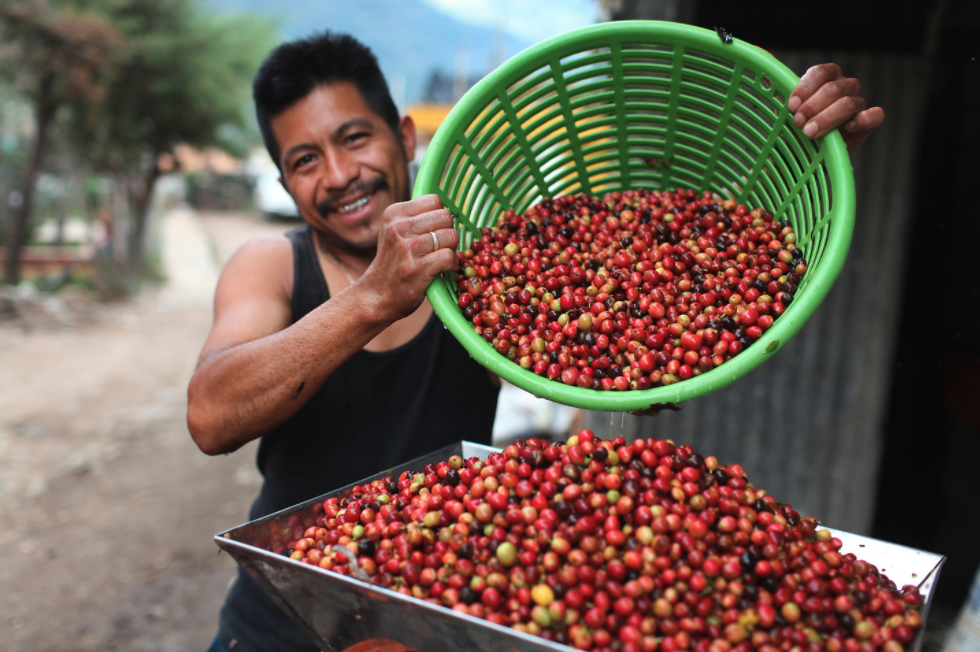
[apss-share]
In 1998 Paul Rice founded Fair Trade USA with the mission to provide quality consumer products without compromising social, environmental, or economic standards. Since that time Fair Trade USA has grown from focusing on coffee to now include apparel, food, and home goods. While Fair Trade continues to see consumer demand rise that doesn’t mean growth comes without its challenges. I chatted with Katie Schneider (Communications at Fair Trade USA) to examine the challenges, future, and benefits of fair trade practices industry wide.
Q: Have you seen an uptick in applications from companies looking to incorporate fair trade practices in their business? If so, what does that outreach and the first few steps look like? What are they saying are the reasons for their desire to adhere to Fair Trade practices?
Katie: Definitely! There has been an incredible increase in demand for Fair Trade Certified products in the last 10 years. This can be attributed to a variety of factors, but the root of it all is the increasingly savvy consumer who is interested in knowing so much more than just the nutrition information for products they buy – they want to know how the product was produced, under what conditions, and how much the farmers or workers were paid.
This increase has been noticed by retailers, who have started to favor products that are certified. This is how brands that might not have otherwise been interested in certification come to call us. Benefits of Fair trade certification include giving employees at these companies a greater sense of purpose and fulfillment in their jobs because they are able to make a big impact around the world through the sales of their products. They also find that in addition to that feel-good element, fair trade gives them increased supply chain visibility that they otherwise may not have had.
Of course, there are also plenty of mission-driven brands who are at the heart of Fair Trade USA and come to us because fair trade is central to what they believe in and what they were founded to do. Fair trade allows them to carry out their mission in a way that is backed up by data, direct feedback from beneficiaries, and within a community of like-minded companies.
When a company is interested in getting started with fair trade, the first few steps involve examining their supply chain and determining whether it makes sense to certify their existing producers or for them to buy from producers that are already certified.
Q: Why the jump from coffee to clothing and other products? What were the pressing reasons to expand to other consumer goods?
Katie: Coffee was the very first Fair Trade Certified product back when Fair Trade USA started in 1998 (back then we were called TransFair USA) and it continues to be the leading fair trade product. Each new product that has been introduced since then has been done because of market interest and the opportunity for significant impact. Launching new categories like our newest ones, seafood and apparel, is labor intensive and time-consuming, so we need to make sure that there is enough brand interest and producers in need to make the effort worthwhile. The exploration of new categories is often grant-funded, and because we don’t take this process lightly, it can take several years before these products hit the shelves.
Although it seems like a no-brainer, the jump into apparel was a big challenge because it was our first non-agriculture product. We had standards for fair trade cotton, but we found that consumers and brands were really interested in bringing fair trade standards to garment factories. Thus, we spent years writing up standards for textile factories, getting those standards approved by stakeholders, and then finding factories and brands to pilot those standards. It was a big push, but all of this work paid off in a meaningful way that top brands are proudly sourcing Fair Trade Certified clothing and significant changes are being made in the lives of factory employees around the world.
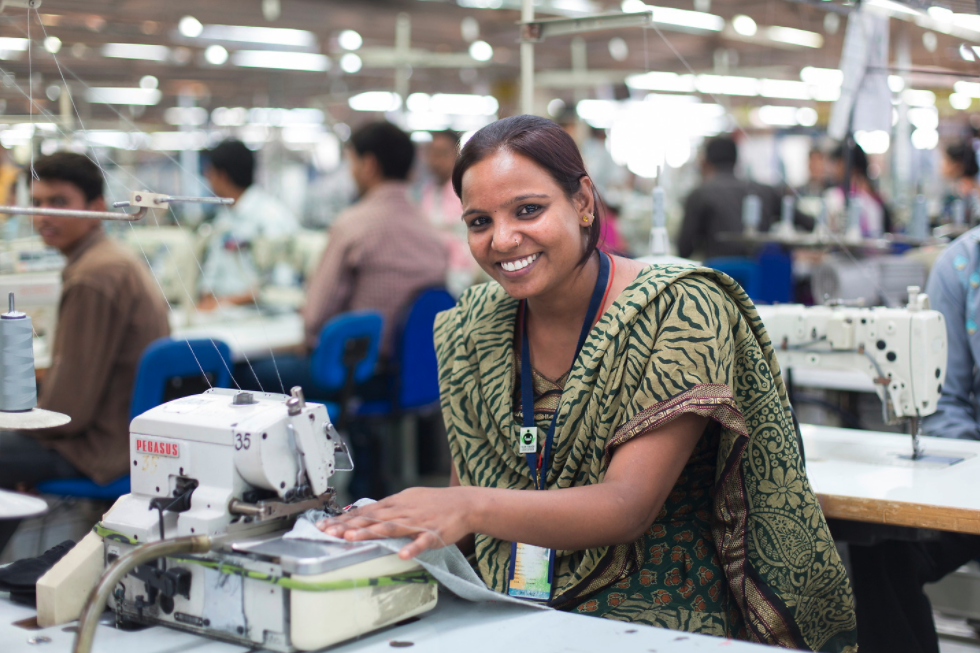
Q: What were some of the initial challenges with bringing companies on board? Were these challenges similar to dealing with consumers?
Katie: As you can probably see from my answers so far, fair trade is complicated! There is a lot of education that needs to be done initially with both new companies and consumers. When a new company gets started with fair trade, we need to really examine their supply chain (which is often a mystery to the person working on the fair trade element). We can either apply fair trade standards to their existing producers, or we can connect them with producers that are already certified. The easiest scenario is with new companies that don’t yet have suppliers, in which case we play matchmaker and connect them with fair trade producers for the ingredients or products they need.
Q: What was the initial interest in pursuing fair trade apparel? Was there a demand from consumers or was this more due to interest on behalf of companies?
Katie: It was both. Similar to your first question but, in apparel it was partially driven by a groundswell of consumers who are getting increasingly curious about “ethical fashion.” They’re knowledgeable about the Rana Plaza factory collapse. Sweatshops are almost old news to them, and they expect much better. They don’t want people to work under unsafe conditions or face death just to make their clothing. Still, not all of these people have the discretionary income to pay the hefty price tag that’s often associated with “sustainable fashion.”
So more and more conscious brands, especially those in the mainstream like J.Crew and Target, are becoming more concerned with their supply chains and workforce, and they’re looking for credible verifiers who can give them insight into and help them regulate their supply chains to ensure human rights and sustainability.
Patagonia, one of our longstanding partners, currently has the largest collection of Fair Trade Certified apparel. They’re sort of an outlier, both in apparel and in how they started their business with a “sustainability first” mindset and expected demand to follow.
Both models work and when they exist simultaneously they create that push and pull that means consumers get more sophisticated and choosy and brands make strides to improve the garment industry at a systems level.
Q: Can you tell me about the We Wear Fair Trade and the new lookbook?
Katie: Every April, We Wear Fair Trade honors the anniversary of the fatal Rana Plaza factory collapse in Bangladesh and joins in the larger conversation around Fashion Revolution Week. This year, the devastating impacts of the COVID-19 pandemic on garment workers worldwide creates even greater urgency for all of us to fiercely advocate for the people in our clothing supply chains. To help increase awareness about fair trade apparel, we partnered with seven female advocates who modeled for the She Wears Fair Trade lookbook and spoke out on ethical, transparent, and sustainable fashion to shed light on the lives impacted by our garment purchases and the impact that’s possible through Fair Trade Certified™ factory-made clothing.
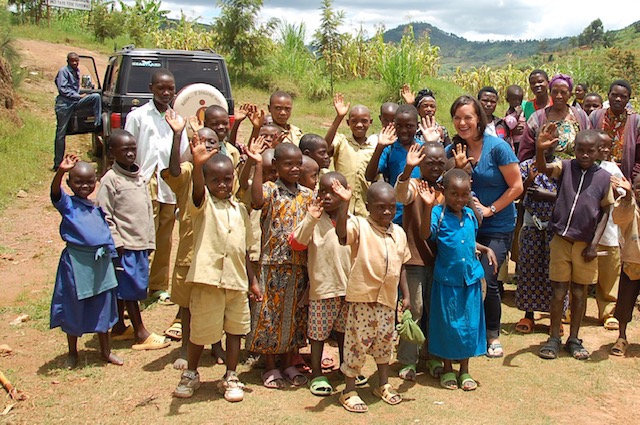
Q: How are prices calculated for raw goods so that it is both beneficial to the farmers, the manufacturers, the companies as well as being price conscious for consumers?
Katie: A great deal of research is done on all fronts to determine the minimum prices and Fair Trade Community Development Fund amounts. The goal is to make Fair Trade accessible to brands and consumers while also making a significant impact on farming, factory, and fishing communities. These prices are reassessed when needed to ensure that they are in line with the market and still working for everyone involved. You can see a list of these prices here. Question 10 is a great example of a pricing evaluation that was recently done in cocoa and resulted in a 20% increase to bring farmers closer to a living income.
Q: What are some of the biggest hurdles Fair Trade faces with expanding reach to companies, communities, and consumers?
Katie: Introducing fair trade to large, mainstream companies is a big commitment. Going through certification can take months of onboarding and compliance measures to either bring their current farm or factory into our program or shift their production into an already certified one. So they have to be 100% committed to authentic transformation before they invest.
For consumers it’s about awareness. We’re recognized in coffee and cocoa, thanks to long-standing grassroots advocacy, but shoppers don’t know to “seek the seal” on many of the other products we certify, like seafood, coconut oil, or their clothing. So a lot of the education we do is around what it means when a product comes from a Fair Trade Certified farm or factory, what products are available with the Fair Trade Certified seal, where shoppers can look for these products, and the big difference their purchase makes. Building fair trade awareness requires strong and thoughtful partnerships with advocates and our brand partners. We Wear Fair Trade is a strong testament to that.
Full campaign here.
You can watch the videos of our female advocates here.
Q: Tell us a bit about the differences and benefits for Fair Trade Certified for local communities/farmers and factories
Katie: Fair trade isn’t making anyone rich – unfortunately, coffee farming (or any type of farming for that matter) is a difficult business to be in. That said, fair trade is empowering small farmers, agricultural farm workers, and factory employees, to slowly lift themselves out of poverty by making much-needed improvements within their communities through their own hard work. These projects may start small to accommodate basic needs, but year over year, new projects are funded to uplift and give new opportunities to entire populations.
For example, the very first group I visited (over 10 years ago) was a women’s cooperative in Rwanda. My colleagues told me not to expect much, as they had just begun exporting their fair trade coffee. Well, as soon as I stepped out of the car, they came running over to shower me with hugs and appreciation. They told me that they had used their fair trade community development funds to help send each family’s oldest kids to school by providing them with shoes, uniforms and school supplies. They were confident that with future sales, they would soon be able to send ALL of their kids to school. So while it wasn’t a lot of money, it was enough to make all the difference in the education of the community’s children.
Other farms that I have visited are much more established, with 15-20 years of fair trade sales. In addition to meeting each family’s basic needs, they are able to focus on improving the quality and productivity of their members’ coffee in order to get better prices and increased income. They are also doing very advanced projects like providing members’ with microcredit loans to pay for fertilizer and other farming supplies or even start small businesses. They also have cooperative grocery stores that enable members’ to get discounted prices on food and other necessities. One group even bought weed-whackers to shave off hours of grueling manual labor. There is so much room for creativity!
The fair trade difference is seen in a variety of ways, including:
- The safety net that farmers have against major drops in the market with the fair trade minimum price
- Collective bargaining power and closer relationships with buyers.
- The additional fair trade premium that can be invested in significant community development projects like schools, scholarships, medical clinics, new roads and bridges, cupping labs, etc. – whatever the community decides it needs most.
- Greater access to credit, knowledge of best practices, transportation assistance, and washing/drying facilities.
- Women’s empowerment through fair trade standards to reduce gender discrimination and include women in the fair trade committees.
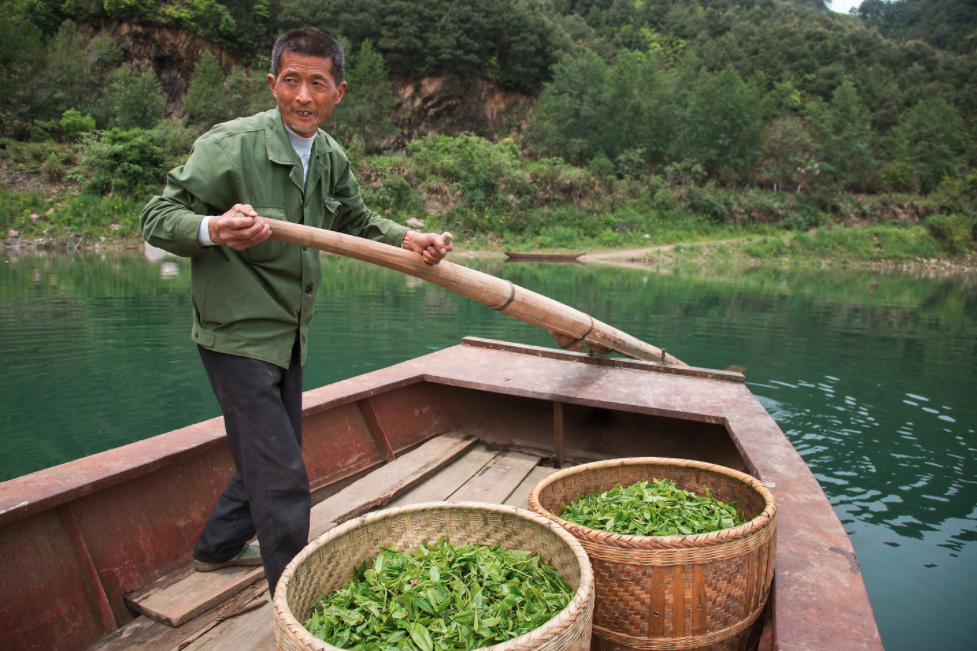
Q: Has there been any push back on price increases?
Katie: Last July, we made the decision to increase the fair trade minimum price and premium 20% after conducting a thorough pricing review which found that even with fair trade, many farmers were still earning well below a living income. The price increase is one way to address extreme poverty and forced and child labor in the cocoa industry. While it’s never good news when prices increase, chocolate companies are well-aware of the challenges faced by cocoa farmers in West Africa, and they are eager to be part of the solution and make cocoa production an attractive profession for future generations to a steady supply of our favorite sweet treat.
Q: What’s in store for the future of Fair Trade Certified?
Katie: That’s the million dollar question on everyone’s minds right now! It’s so hard to predict the future during this unprecedented pandemic. In the short term, we have changed course slightly and are focused on helping our fair trade producers weather this storm. They are some of the most vulnerable populations, already living on the edge of poverty so we acted quickly to survey and assess their needs so that we could provide help or connect them with other NGOs. You can learn more about Fair Trade USA’s COVID-19 response here: https://www.fairtradecertified.org/news/covid-update-around-the-world
During the 1998 recession, while consumers were spending less, we saw that they started to be much more careful about how they spent their money. They bought products that were good for the planet or that helped others – like fair trade. The situation we’re in now is pretty different, but if the spirit of togetherness and helping one another that is so strong right now continues, I think people will continue to support farmers and workers around the world through their fair trade purchases.
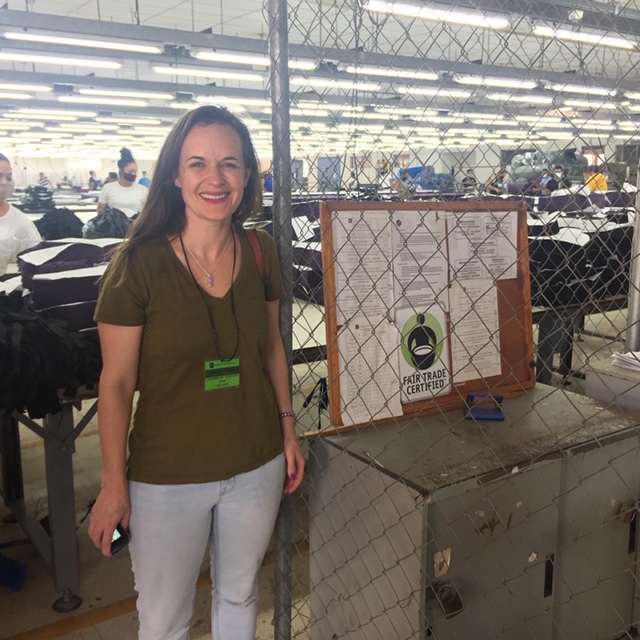
*Katie Barrow Schneider has spent the majority of her career working to build consumer awareness on Fair Trade USA’s communications team. She enjoys traveling to remote regions of the world to visit fair trade communities and share their stories of hope and change. Now a part-time PR consultant and part-time homeschool teacher to her 4-year-old twin girls, she resides in San Jose, CA and travels much less than she’d like.*
Get in touch:
Instagram: @FairTradeCertified
Twitter: @FairTradeCert
Facebook: Fair Trade Certified
E-mail: pr@fairtradecertified.org
This interview was originally published on CaitBagby.com (now merged with this site) on 15 July 2020



My firend suggested I might like this website. He was totally right. This post actually made my day. You cann’t imagine just how much time I had spent for this information! Thanks!
Thanks I have recently been looking for info about this subject for a while and yours is the greatest I have discovered so far However what in regards to the bottom line Are you certain in regards to the supply
Your blog is a constant source of inspiration for me. Your passion for your subject matter is palpable, and it’s clear that you pour your heart and soul into every post. Keep up the incredible work!
Good https://is.gd/tpjNyL
Very good https://lc.cx/xjXBQT
Very good https://urlr.me/zH3wE5
Awesome https://rb.gy/4gq2o4
Good https://rb.gy/4gq2o4
Good https://rb.gy/4gq2o4
Very good https://is.gd/N1ikS2
Awesome https://is.gd/N1ikS2
Awesome https://is.gd/N1ikS2
Awesome https://is.gd/N1ikS2
Awesome https://is.gd/N1ikS2
Very good https://is.gd/N1ikS2
Good https://is.gd/N1ikS2
Good https://shorturl.fm/j3kEj
I have to thank you for the efforts you have put in penning this website.
I really hope to see the same high-grade content from
you later on as well. In fact, your creative writing
abilities has motivated me to get my very own site now 😉
casino en ligne
I don’t even know the way I stopped up right here, however I assumed this post was once good.
I don’t recognise who you’re however definitely you are going to a famous
blogger should you are not already. Cheers!
casino en ligne fiable
I think the admin of this website is truly working hard in support of his web site, as here every data is quality based information.
casino en ligne francais
You ought to take part in a contest for one of the greatest sites on the
net. I most certainly will recommend this web site!
casino en ligne francais
I like what you guys tend to be up too. This sort of clever work and reporting!
Keep up the good works guys I’ve included you guys to our blogroll.
casino en ligne
Hi there! I’m at work browsing your blog from my new iphone 3gs!
Just wanted to say I love reading through your blog and
look forward to all your posts! Carry on the great work!
casino en ligne
Heya! I just wanted to ask if you ever have any
issues with hackers? My last blog (wordpress) was
hacked and I ended up losing a few months of hard work due to no data backup.
Do you have any methods to stop hackers?
casino en ligne
Hello everyone, it’s my first pay a visit at this website, and post is in fact fruitful for me, keep up
posting these content.
casino en ligne France
Hi there! This post couldn’t be written any better!
Reading through this post reminds me of my good old room mate!
He always kept talking about this. I will forward this
page to him. Fairly certain he will have a good read.
Thank you for sharing!
casino en ligne France
I just couldn’t depart your web site before suggesting that
I really enjoyed the usual info a person supply on your guests?
Is going to be back incessantly in order to check up on new posts
casino en ligne fiable
Top https://shorturl.fm/YvSxU
https://shorturl.fm/XIZGD
https://shorturl.fm/FIJkD
https://shorturl.fm/j3kEj
https://shorturl.fm/68Y8V
https://shorturl.fm/N6nl1
https://shorturl.fm/5JO3e
https://shorturl.fm/m8ueY
https://shorturl.fm/N6nl1
https://shorturl.fm/YvSxU
https://shorturl.fm/9fnIC
https://shorturl.fm/A5ni8
https://shorturl.fm/5JO3e
https://shorturl.fm/XIZGD
https://shorturl.fm/TbTre
https://shorturl.fm/YvSxU
https://shorturl.fm/XIZGD
https://shorturl.fm/9fnIC
https://shorturl.fm/uyMvT
https://shorturl.fm/47rLb
https://shorturl.fm/xlGWd
https://shorturl.fm/0oNbA
https://shorturl.fm/Kp34g
https://shorturl.fm/PFOiP
https://shorturl.fm/uyMvT
This website absolutely has all of the tidings and facts I needed there this subject and didn’t positive who to ask.